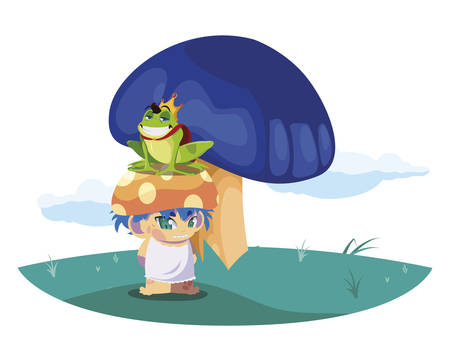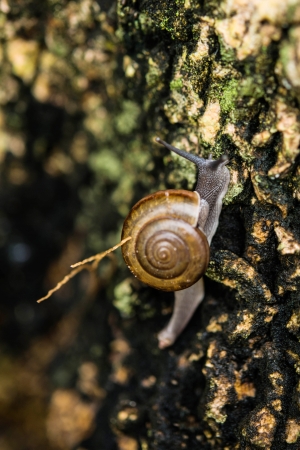Understanding Slugs and Snails in British Gardens
When you step into your garden with your little ones, peering beneath leafy greens and colourful blooms, it’s not long before you spot a glistening trail winding through the soil. Slugs and snails are a common sight in British gardens, especially after a fresh rain or misty morning. These slimy creatures have an important role to play—breaking down decaying plant matter, recycling nutrients back into the earth, and providing food for birds, hedgehogs, and frogs. However, their fondness for tender shoots and leafy vegetables often brings them into conflict with gardeners of all ages. In the mild, damp climate of Britain, slugs and snails thrive, making it a unique challenge to balance nurturing young plants while respecting the natural ecosystem. Understanding their habits—like hiding in cool, shady spots during the day and feasting at night—can help families work together to protect precious seedlings without upsetting nature’s delicate harmony. Let’s explore how we can gently guide these garden visitors away from our prized plants, learning from them as we go about resilience, adaptation, and the interconnectedness of our British gardens.
2. Creating a Slug-Resistant Garden Design
Designing a garden that naturally deters slugs and snails is both an art and a science, especially in the lush, often damp conditions of the UK. By observing how nature defends itself, we can create landscapes that are less appealing to these munching visitors while still nurturing a family-friendly, wildlife-rich environment. Here’s how you can draw inspiration from the countryside to protect your British garden.
Layout Strategies Inspired by Nature
Start by planning raised beds or defined borders—slugs and snails find it trickier to traverse sharp edges and dry surfaces. Encourage airflow with spacious plantings and avoid overcrowding, as dense foliage creates humid hideaways perfect for pests. Consider paths made from gravel or bark; their rough textures act as natural deterrents underfoot.
Natural Barriers: Physical and Living Defences
Setting up simple barriers can make all the difference. Below is a table of effective, eco-friendly barriers commonly used in UK gardens:
| Barrier Type | Description | Best For |
|---|---|---|
| Copper Tape | Emits a mild electric charge when touched by slugs/snails | Pots, raised beds, greenhouse benches |
| Crushed Eggshells/Grit | Creates a sharp surface slugs dislike crossing | Borders around vulnerable plants |
| Wool Pellets | Absorb moisture and form a prickly mat when wet | Vegetable patches, flower beds |
| Bark Mulch/Gravel | Makes movement uncomfortable for soft-bodied pests | Pathways, mulch layers around plants |
Companion Planting: Teamwork in the Border
Certain plants are natural allies against slugs and snails. Herbs like rosemary, sage, and thyme not only add scent and flavour but also deter pests with their aromatic oils. Marigolds (calendula) can be used as sacrificial plants—drawing pests away from your prized crops. Try interplanting leafy greens with these defenders for added protection.
A Holistic Approach for UK Families
By involving children in creating these nature-inspired defences—collecting eggshells, laying bark paths, or choosing companion plants—you foster care for both your garden and its wild inhabitants. Together, you build resilience into your plot and create cherished moments outdoors, all while keeping those pesky slugs at bay.

3. Natural Deterrents and Remedies
When it comes to protecting your cherished British garden from slugs and snails, there’s no need to reach straight for harsh chemicals. Instead, let’s take inspiration from nature itself and our own homes—much like a family learning together through hands-on discovery in the garden. Explore these eco-friendly solutions that are gentle on your plants, safe for wildlife, and kind to the environment.
Encouraging Natural Predators
One of the most effective ways to keep slugs and snails in check is by inviting their natural enemies into your garden. Hedgehogs, frogs, toads, and even thrushes love a sluggy snack! You can create a welcoming habitat by providing log piles, small ponds, or dense shrubs for shelter. Involve your children in building these wildlife havens—it’s an adventure in teamwork and observation that will have everyone rooting for your new garden allies.
Homemade Sprays and Solutions
If you fancy a bit of kitchen alchemy, try whipping up homemade deterrent sprays. Garlic spray is a traditional favourite: simply crush a few cloves, steep them in hot water, cool, and strain into a spray bottle. A light misting over vulnerable leaves sends slugs scurrying elsewhere. Similarly, diluted coffee grounds or cooled tea can be sprinkled around plant bases as a natural barrier—plus, they’re readily available in most British households!
Everyday British Household Items
Your larder holds hidden treasures for natural pest control. Crushed eggshells or coarse grit scattered around seedlings form a prickly perimeter that slugs dislike crossing—get the little ones involved with breakfast prep and make it a morning ritual! Copper tape is another time-honoured method; wrap it gently around pots or raised beds to give gastropods an unpleasant tingle. Even wool pellets, made from British sheep’s fleece, offer a sustainable solution that breaks down into nutritious mulch for your soil.
A Gentle Word on Salt
While salt is often mentioned as a slug remedy, it’s best avoided in the garden as it can damage both plants and precious soil life. Instead, focus on these nurturing approaches that protect not only your blooms but also the wider ecosystem—teaching young gardeners about balance and respect for nature with every step.
4. Safe Plant Choices for Slug-Prone Areas
If you’ve ever tiptoed out in your pyjamas after a rainy British evening, only to find your prized hostas riddled with holes, you’re certainly not alone! Here’s where clever plant selection comes to the rescue—think of it as inviting guests into your garden who simply don’t appeal to the local slug and snail crowd. By choosing robust native and ornamental plants that slugs and snails tend to avoid, you’ll foster a naturally resilient garden without constant intervention.
Understanding What Slugs and Snails Avoid
Our slimy friends are surprisingly picky eaters. They generally shy away from tough, aromatic, or hairy-leaved plants, preferring instead tender new shoots and soft leaves. By weaving these less appetising options into your planting scheme, you can gently guide slugs elsewhere—perhaps back to the wild bramble patch!
Top Slug-Resistant Plants for UK Gardens
| Plant Name | Type | Key Benefits |
|---|---|---|
| Geranium (Cranesbill) | Perennial | Tough foliage; lovely blooms; low maintenance |
| Lavandula (Lavender) | Shrub | Aromatic oils deter slugs; attracts pollinators |
| Alchemilla mollis (Ladys Mantle) | Perennial | Soft, hairy leaves; excellent ground cover |
| Ferns (e.g., Dryopteris) | Native Perennial | Tough fronds; shade-loving and undemanding |
| Heuchera (Coral Bells) | Ornamental Perennial | Colourful foliage; resistant to munching pests |
| Euphorbia (Spurge) | Perennial/Shrub | Pungent sap deters both slugs and rabbits! |
| Aquilegia (Columbine) | Cottage Garden Perennial | Dainty flowers on sturdy stems; easy to grow from seed |
| Sedum (Stonecrop) | Semi-Succulent Perennial | Thick leaves unappealing to slugs; drought-tolerant too |
| Nepeta (Catmint) | Herbaceous Perennial | Scented foliage; bees love it but slugs don’t! |
| Bergenia (Elephant Ears) | Evergreen Perennial | Lustrous, leathery leaves withstand attacks well |
Clever Plant Pairings: Inviting Diversity, Discouraging Pests
A great way to boost natural resilience is by mixing these slug-resistant varieties among more vulnerable plants. For example, a ring of lavender or catmint around your veg patch can create a fragrant barrier, while lady’s mantle and ferns offer lush texture and protection at the border’s edge. With a little creativity—and perhaps some help from curious young gardeners—you’ll soon discover which combinations keep your beds beautiful and bite-free. Choosing wisely doesn’t just discourage pests; it also brings an enchanting tapestry of colour, fragrance, and life to every corner of your British garden.
5. Family-Friendly Activities: Spotting and Managing Slugs Together
Transforming slug and snail prevention into a family affair is not only effective, but also inspires a deeper appreciation for the natural world right outside your back door. British gardens, with their lush borders and vegetable patches, offer the perfect setting for gentle, hands-on activities that both educate and entertain children.
Engage Curiosity Through Exploration
Begin by equipping your little ones with torches and magnifying glasses for an evening “slug safari”. Early mornings or damp evenings are prime times to spot these garden visitors. Encourage children to observe how slugs move, where they like to hide—under pots, stones, or leafy canopies—and discuss why they are drawn to certain plants. Turn each discovery into a story, inviting children to imagine what it might be like to be a slug navigating the garden jungle.
Gentle Relocation as a Learning Opportunity
Instead of squashing or using harmful chemicals, teach children the value of kindness by helping them gently collect slugs in small containers. Take the time to examine their unique markings and textures before relocating them to a “wild corner” away from prized lettuces and delphiniums. This practice fosters empathy and respect for all creatures, reinforcing the idea that every being has its place in the garden ecosystem.
Craft Natural Barriers Together
Get creative as a family by crafting natural barriers from materials found around the home or garden. Crushed eggshells, coffee grounds, or copper tape can be arranged around vulnerable plants. Invite children to help with spreading these materials and monitoring their effectiveness over time—a wonderful opportunity for budding scientists to record observations in a nature journal.
Storytelling and Reflection
After your joint efforts, gather together to share stories about your gardening adventures. Reflect on what you’ve learned about slugs and snails, how your actions have helped protect your plants, and how working together makes gardening more enjoyable. This ritual strengthens family bonds while nurturing lifelong curiosity and respect for British wildlife.
6. Celebrating Biodiversity: Embracing Every Garden Visitor
If you pause with your children on a dewy morning stroll, you might spot a trail of silver weaving through the lettuce leaves or see a snail cosily tucked beneath a hosta. It’s tempting to see these garden guests as foes, but in the grand tapestry of your British garden, every creature—yes, even slugs and snails—plays a role. By nurturing curiosity together, asking “What are they up to?” or “How do they fit in here?”, we open our hearts to the story unfolding beneath our boots.
Slugs and snails are part of an intricate web of life. They help decompose plant matter, enriching the soil for future growth. Their presence invites birds, hedgehogs, and beetles—each one a character in your garden’s living drama. When we choose natural prevention methods over harsh chemicals, we protect this precious balance, allowing pollinators to thrive and earthworms to work their quiet magic.
Encouraging Observation and Wonder
Gathering around the veg patch with little ones or neighbours, take a moment to observe who visits your garden at dusk and dawn. Encourage questions: Why do thrushes tap at stones? How do frogs find their way to our pond? These moments nurture respect for all life and teach us that harmony isn’t about eliminating nuisances, but understanding how each has its place.
Reframing Prevention as Nurture
Natural slug and snail prevention is more than defence—it’s an invitation to greater biodiversity. Mulching with bark chips or planting sacrificial hostas draws attention to how we can gently guide these creatures without harming them. By creating habitats for predators and choosing companion plants, we foster resilience in our gardens and invite children to be stewards of nature’s delicate balance.
Cultivating a Harmonious Haven
As British gardeners, let’s celebrate the diversity of life that calls our plots home. Every slug, snail, ladybird, and blackbird adds richness to our green spaces. By working with nature—observing, learning, adapting—we transform our gardens into havens brimming with life and possibility. In this gentle dance between prevention and inclusion lies the true joy of gardening: watching young hands discover, old traditions blend with new wisdom, and every visitor find its place under the apple tree.


